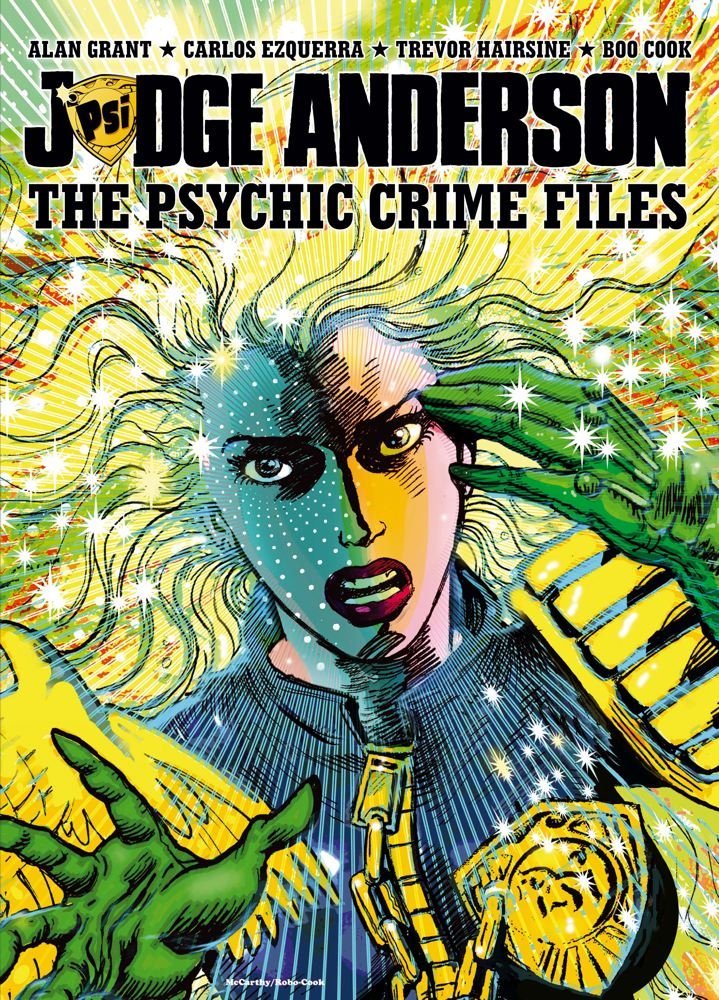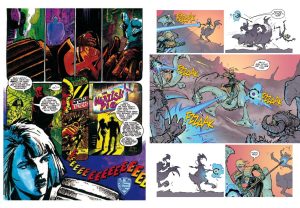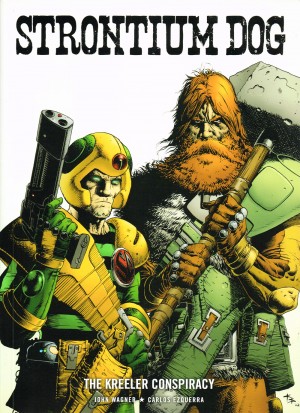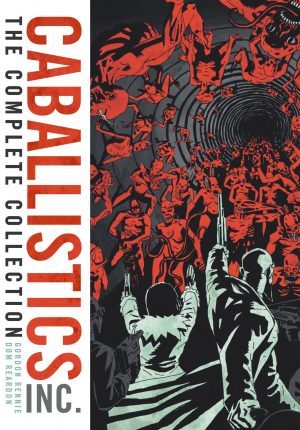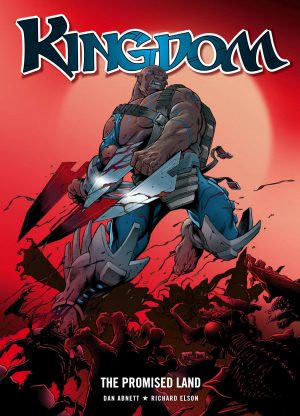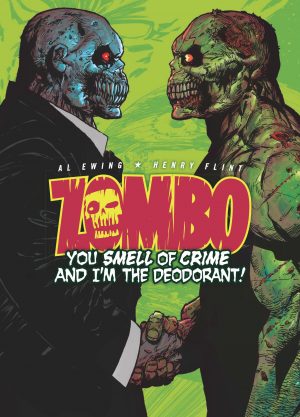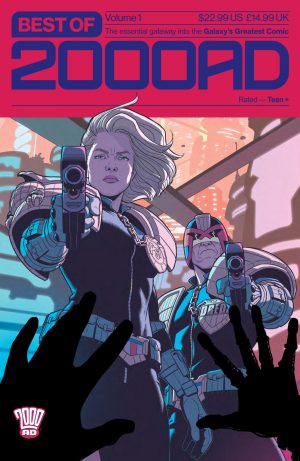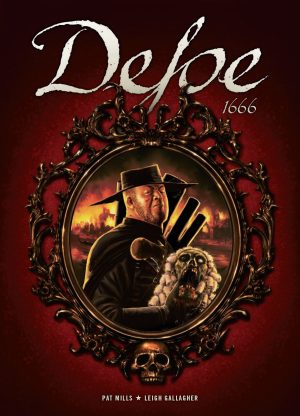Review by Karl Verhoven
The Psychic Crime Files was issued to coincide with Judge Anderson’s appearance in the 2012 Judge Dredd movie (the good one). As Alan Grant tends toward longer serials with Anderson, the curation of a sampler spanning the years is therefore restricted to some extent, and this shouldn’t be seen as the best of Anderson by a long shot. On the other hand, at the time of publication much of what’s presented here remained several years away from inclusion in Psi Files collections.
The earliest selection is ‘The Random Man’ from 1989, also found in The Psi Files Volume 01 with Carlos Ezquerra’s colour stripped out. A perp who takes his decisions on the roll of a dice is fed into psychological sexual drama. At the time it was new territory for Anderson, but now there’s something uncomfortable about it, and the colour may have looked muddy in black and white, but it’s all over the place here (sample art left).
A feature of this collection is the editors recognising the early promise of artists who’d vastly improve. It’s the case with Trevor Hairsine on ‘Lawless’, in which an anarchist embarrasses the Judges, and Boo Cook, who draws almost half the book. He starts with ‘Wiierd’ in which the loose styles of both Cam Kennedy and Ian Gibson can be seen as influences in an imaginative story about people choosing to live their lives in VR fantasies. “Virtual reality is beautiful”, thinks Anderson, “flawless, glowing with an incandescent light from within. People can interact peacefully with near zero crime”. Considering the hell hole of Mega-City, it must seem that way, but corruption soon complicates the idyll.
By the time of ‘The House of Vyle’ from two years later in 2010, Cook has improved considerably, learnt the priority of storytelling and has begun to include a few visual jokes also. It’s not Grant’s best work, starting well enough with the idea of a witch-based tourist attraction outside Mega-City One, the disappearance of a rock star who lives there, and the mystery of the haunted house they occupy. However, it’s rushed at the end, as if Grant became tired of it and fudged the explanations.
Two stories of Anderson’s days as a Cadet follow, again, not Grant at his best. The first involves a brutal lesson along with the very young Anderson being slapped hard by her trainer, decently drawn by Patrick Goddard, but the longer story by Ezquerra is far from the artist’s peak. The faces look strange, the underage girls are gratuitously objectified and the inking from son Hector may clean up his father’s line, but since Ezquerra’s line defines Mega-City One no cleaning up is necessary. Grant’s plot goes through the motions without ever surprising.
The overall result is a Judge Anderson collection without the three artists who’ve drawn her most (Brett Ewins, Arthur Ranson and Steve Sampson) and with little of the spiritual nature that serves to differ her series from Dredd.
